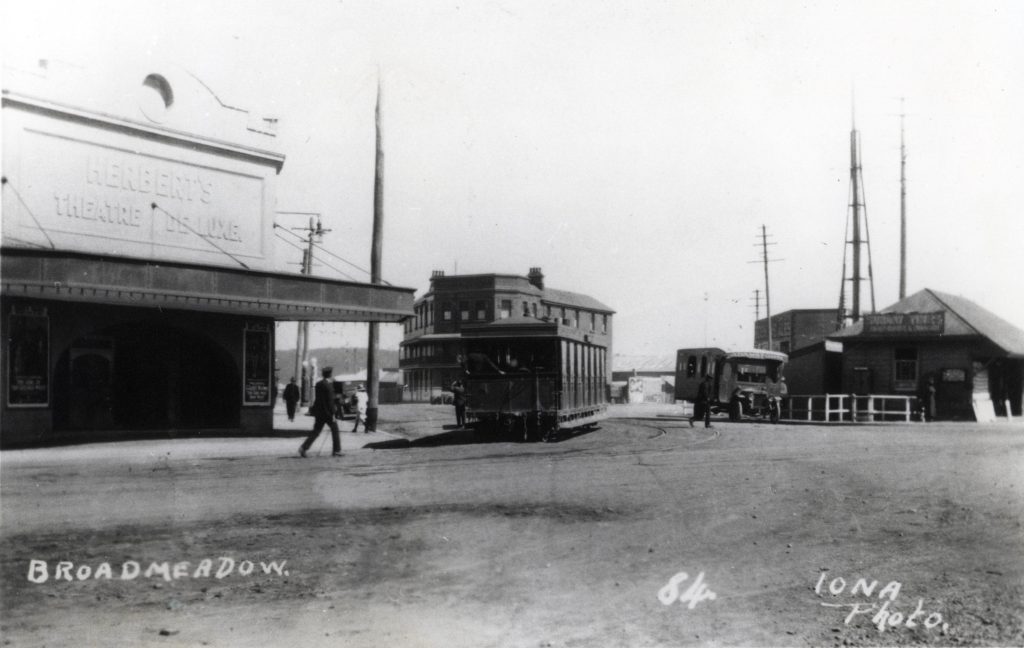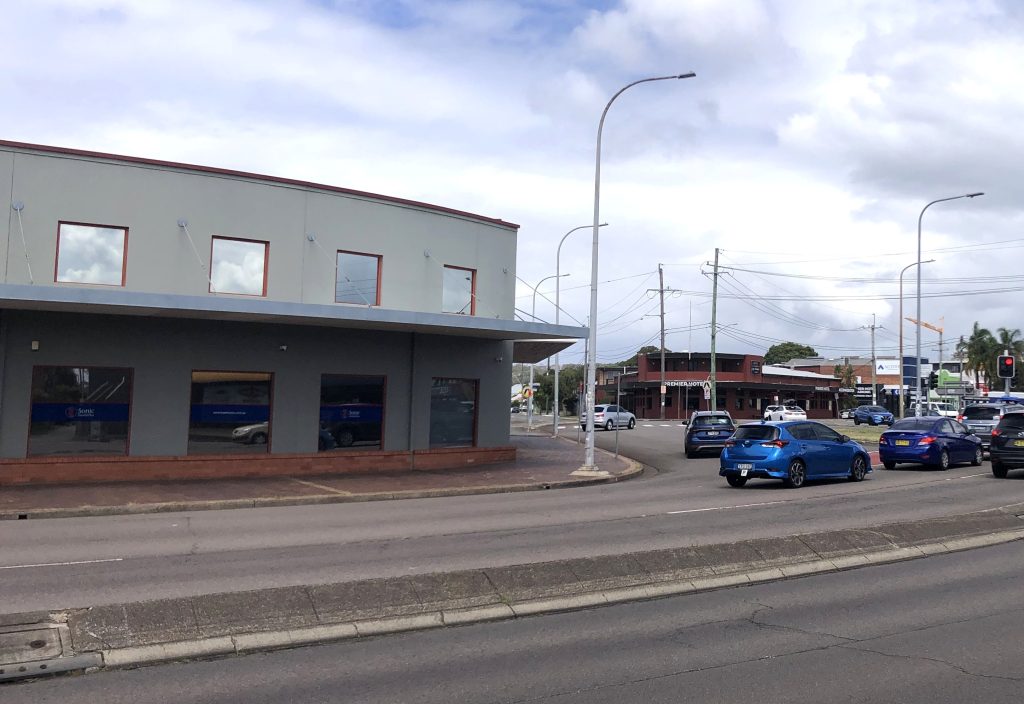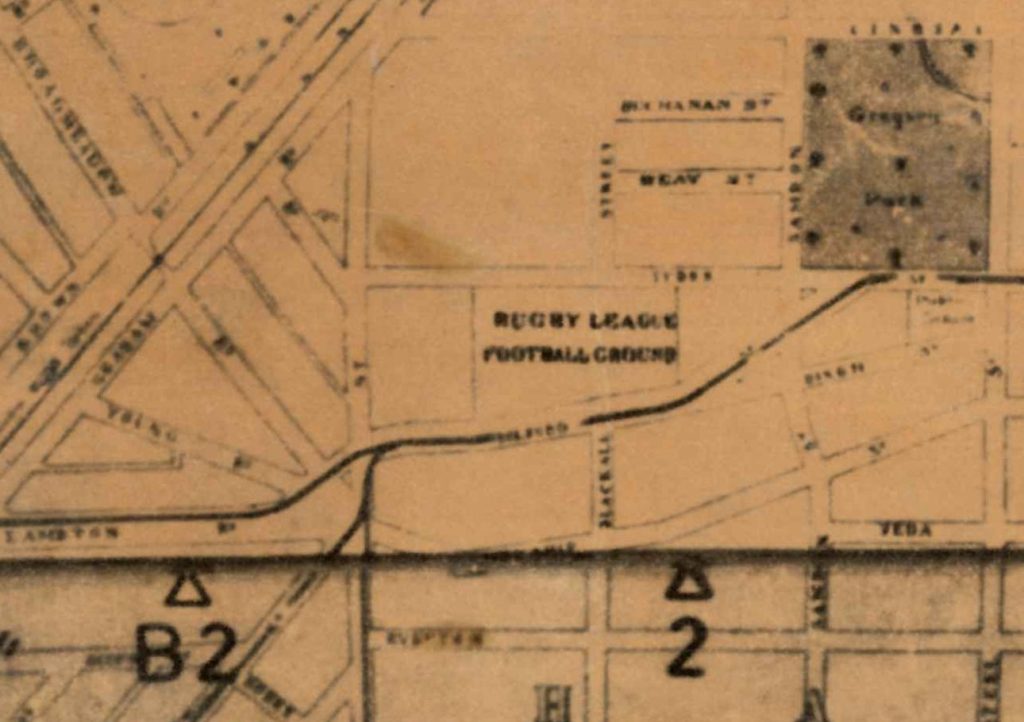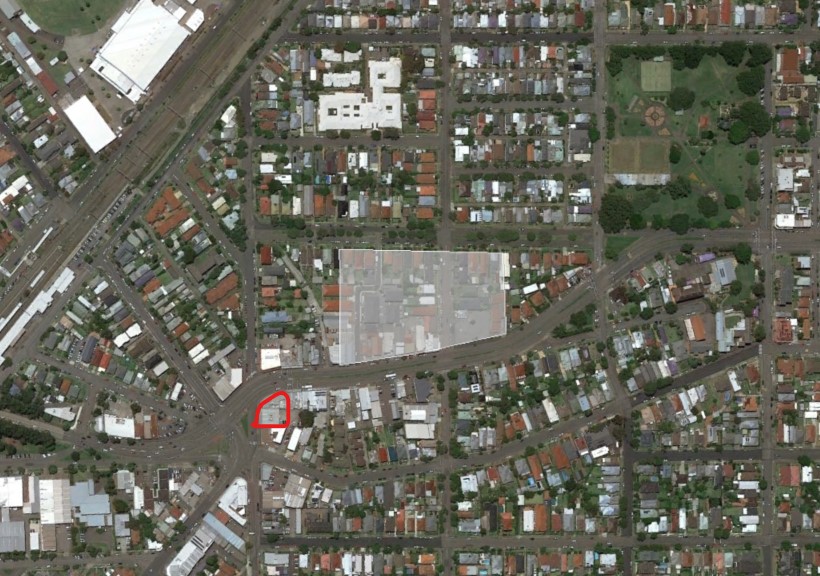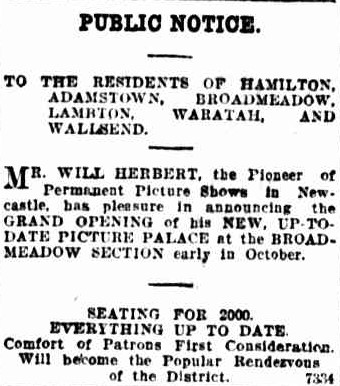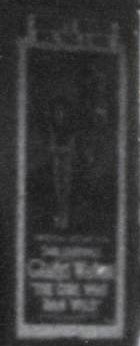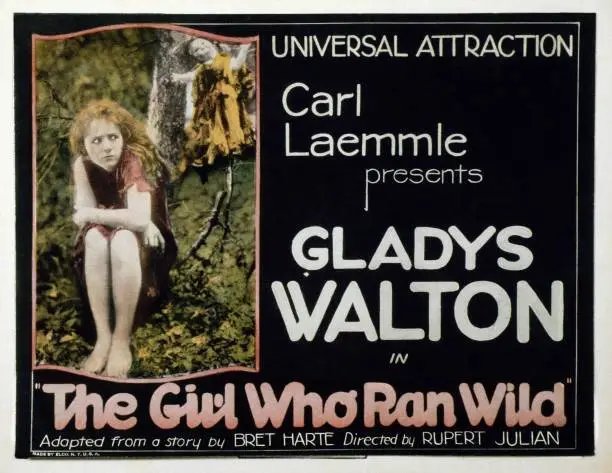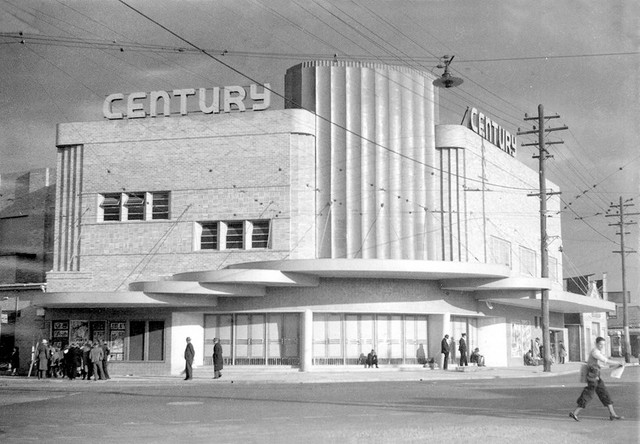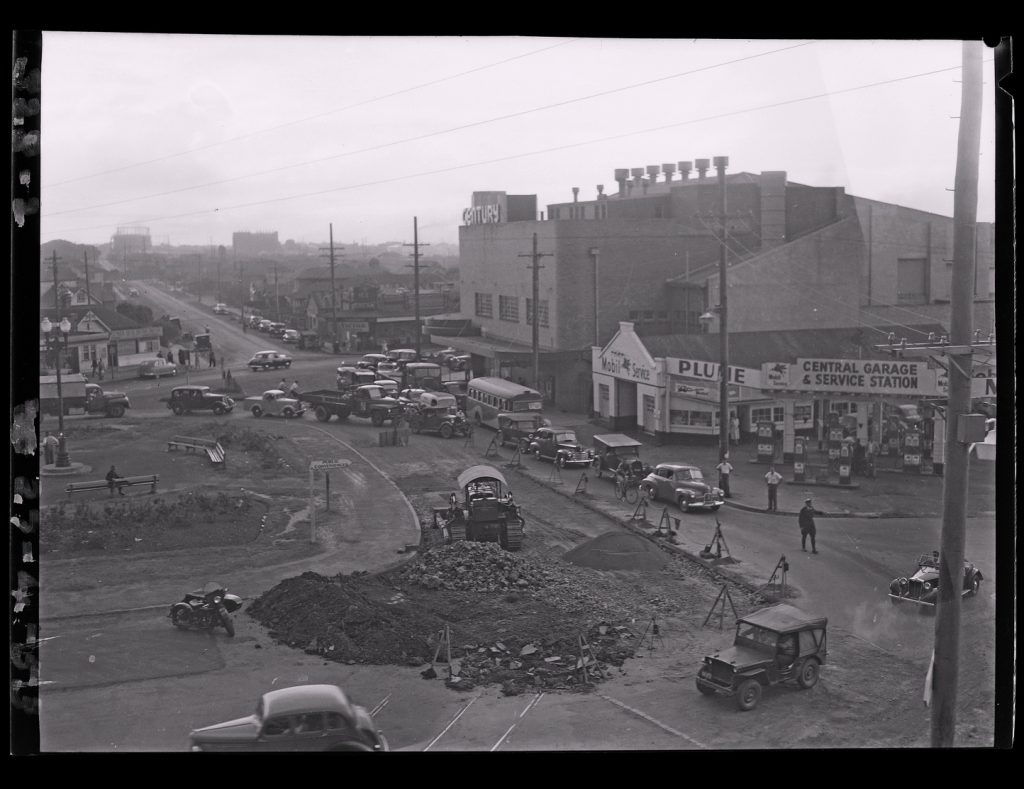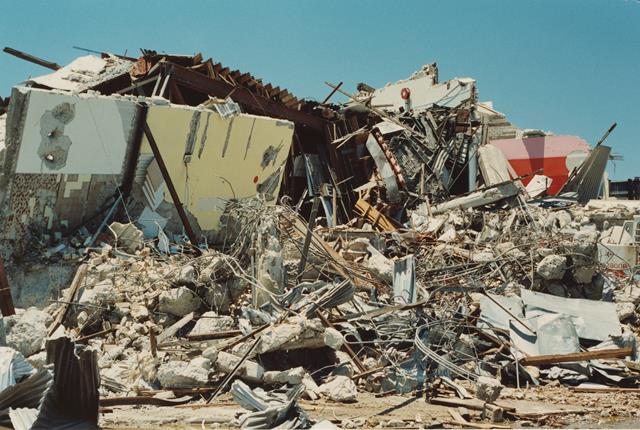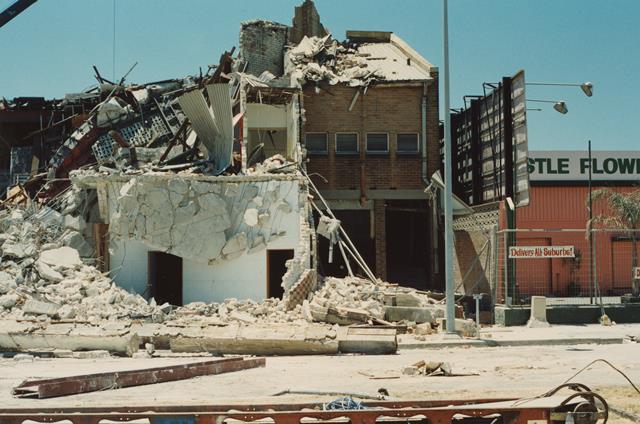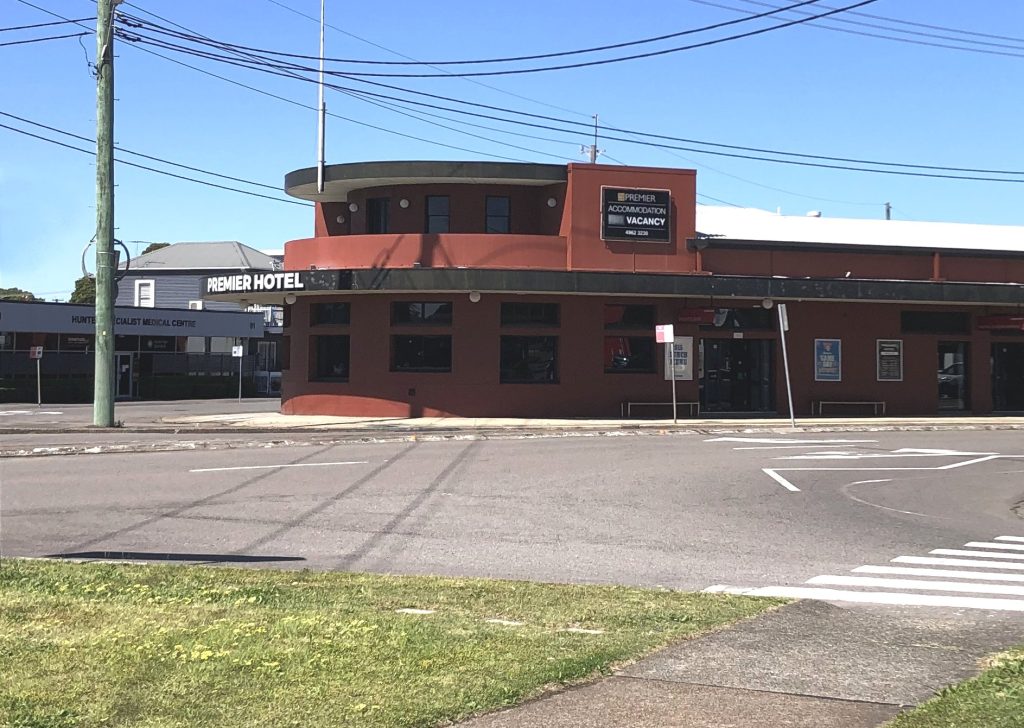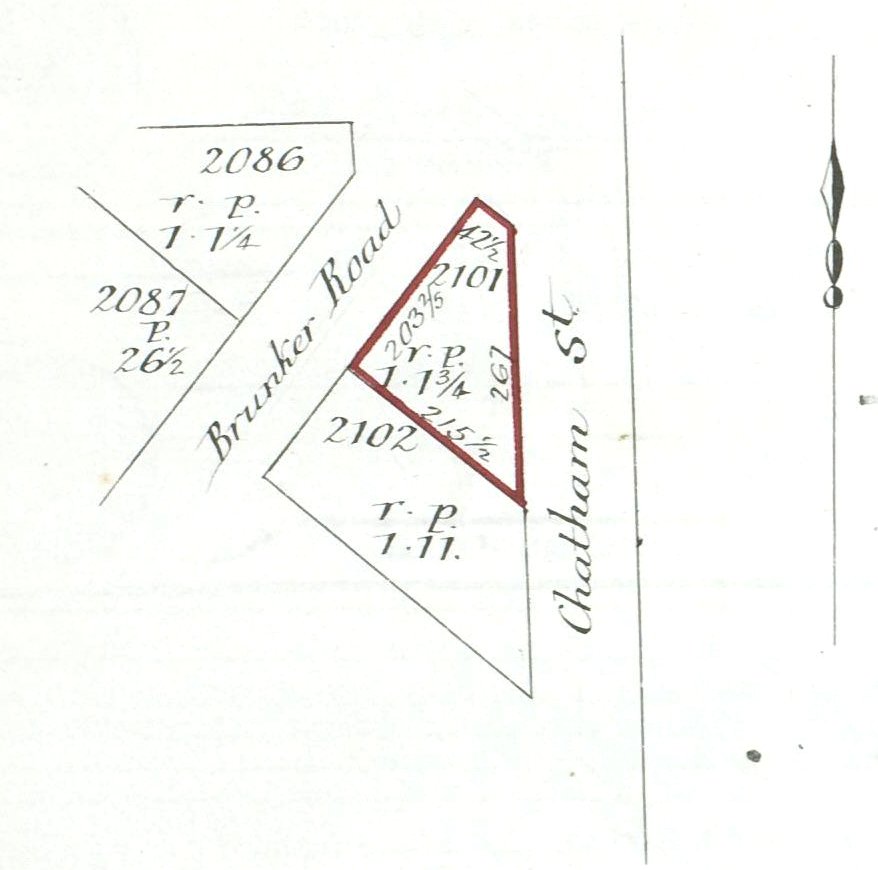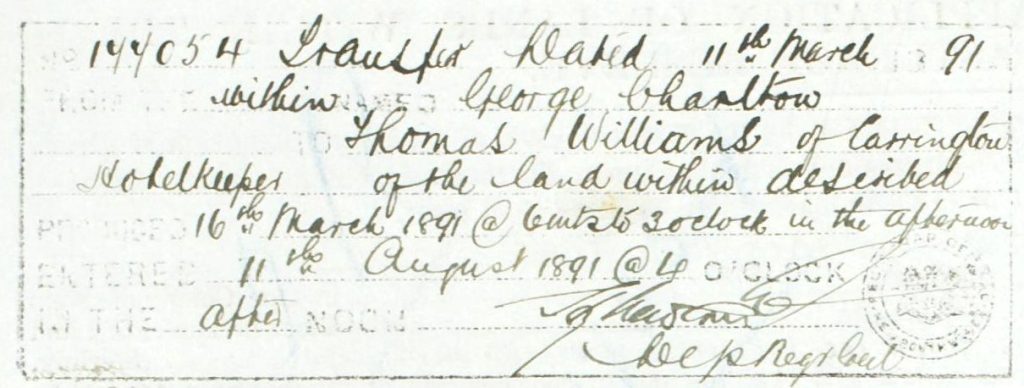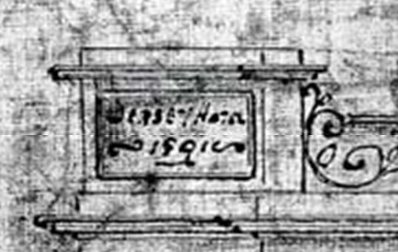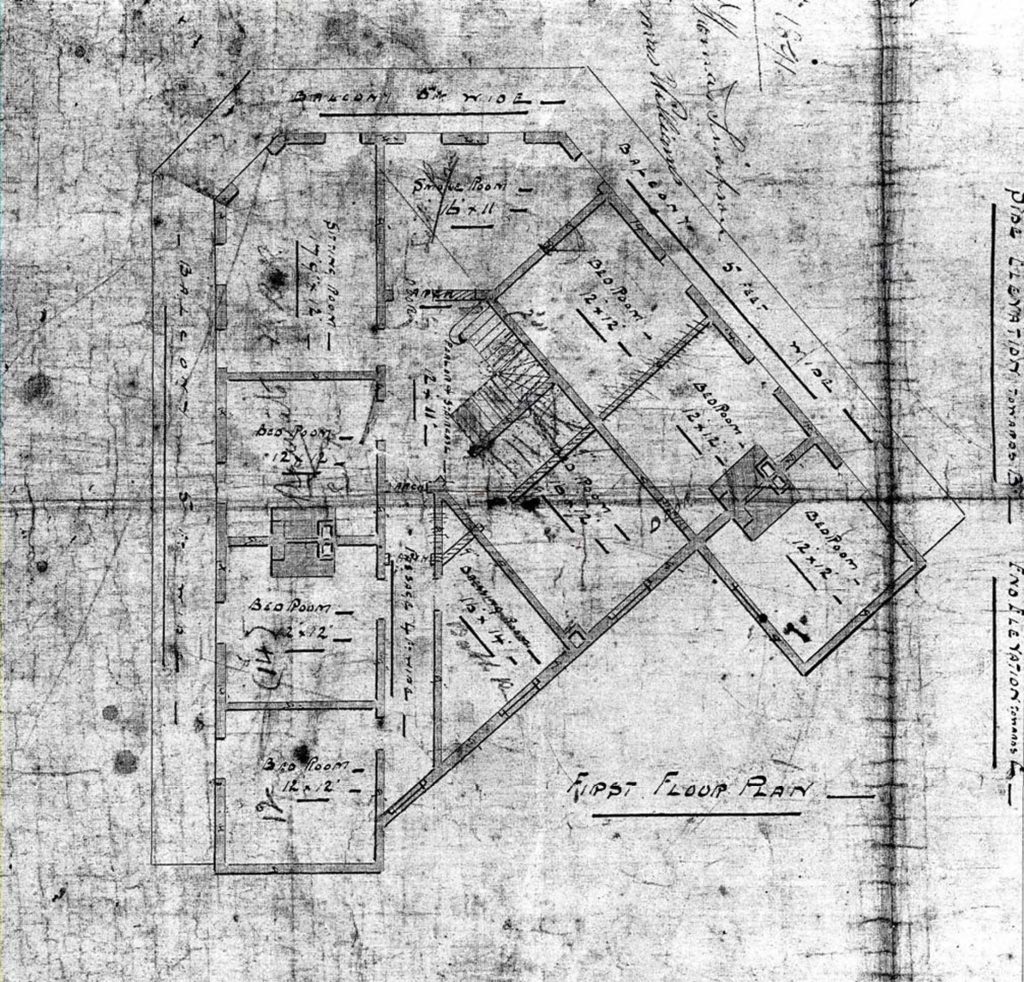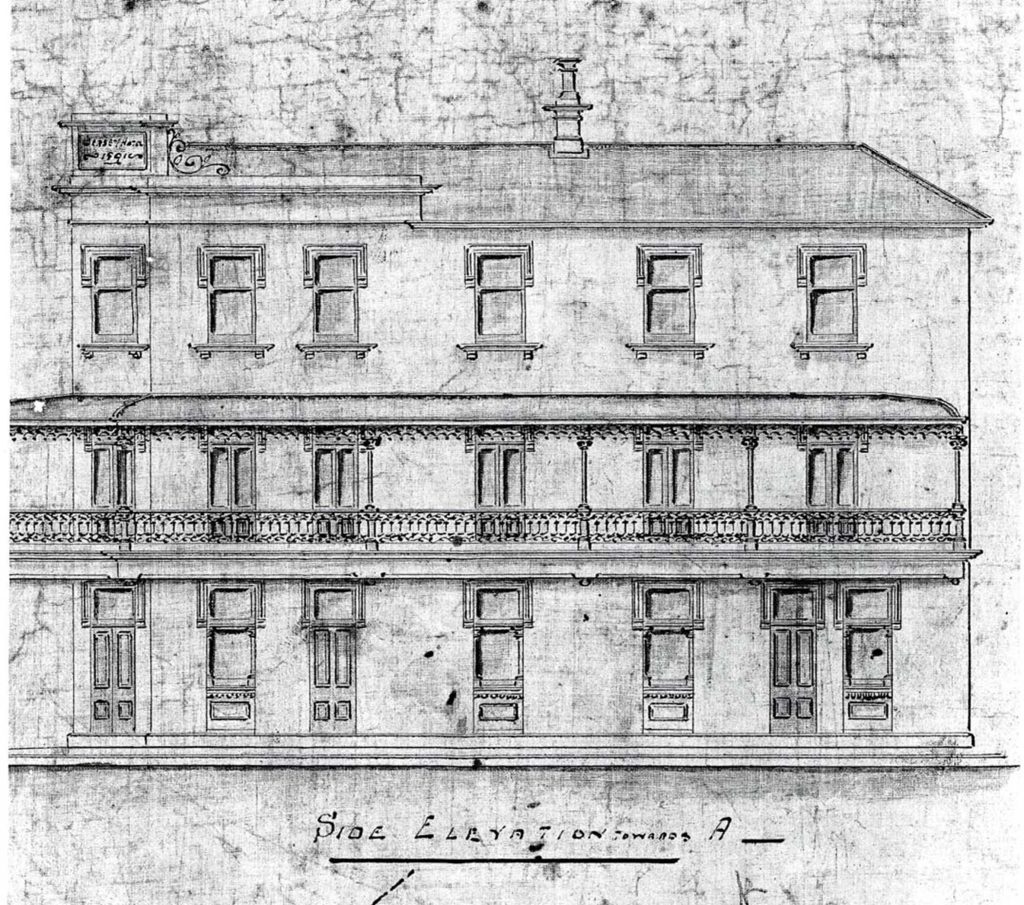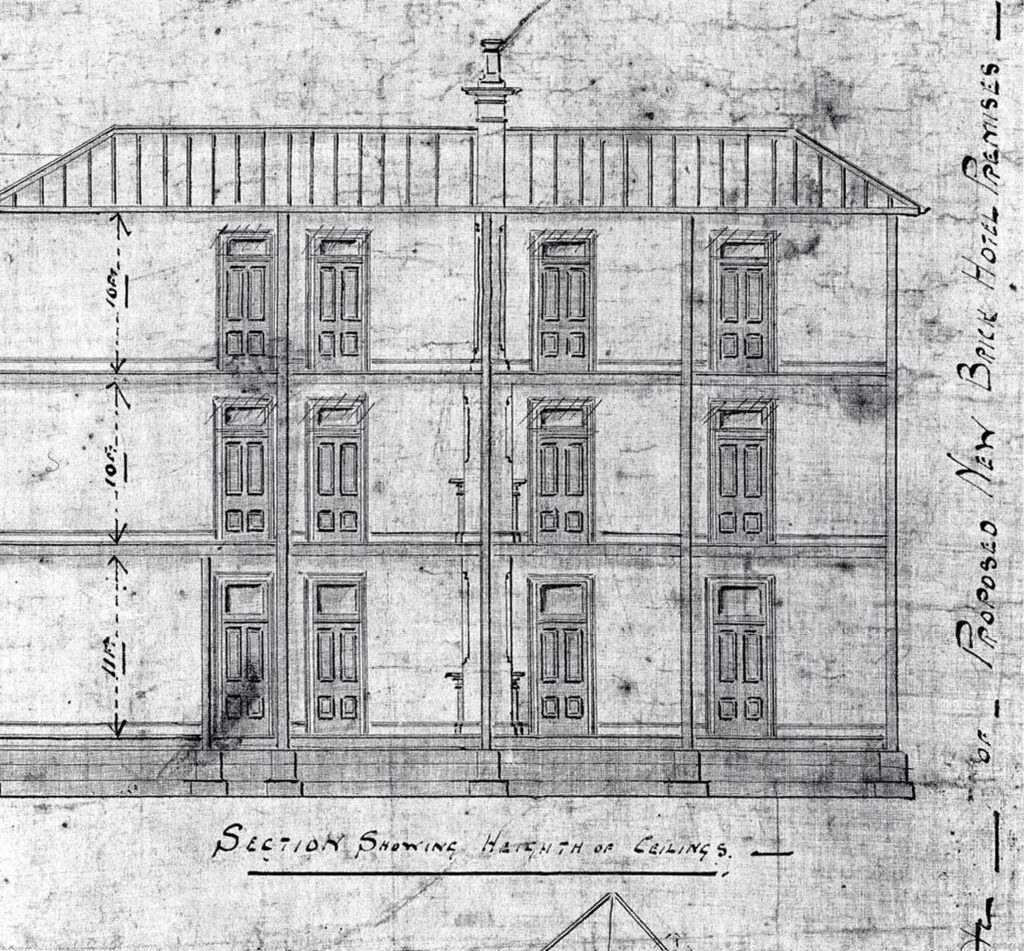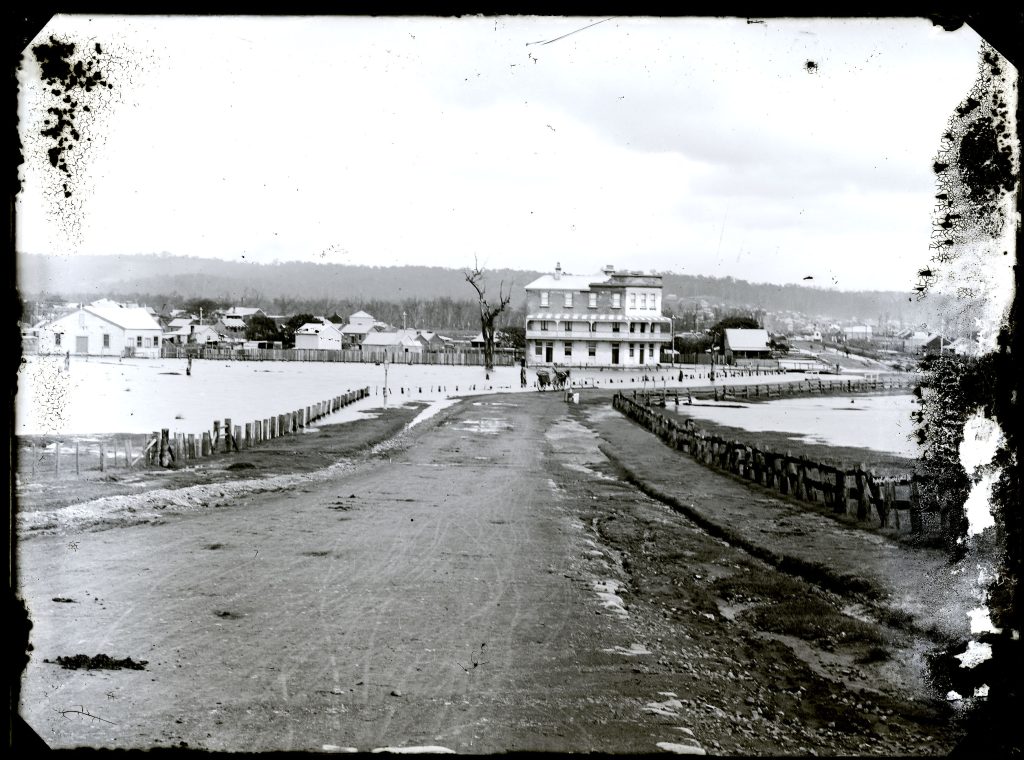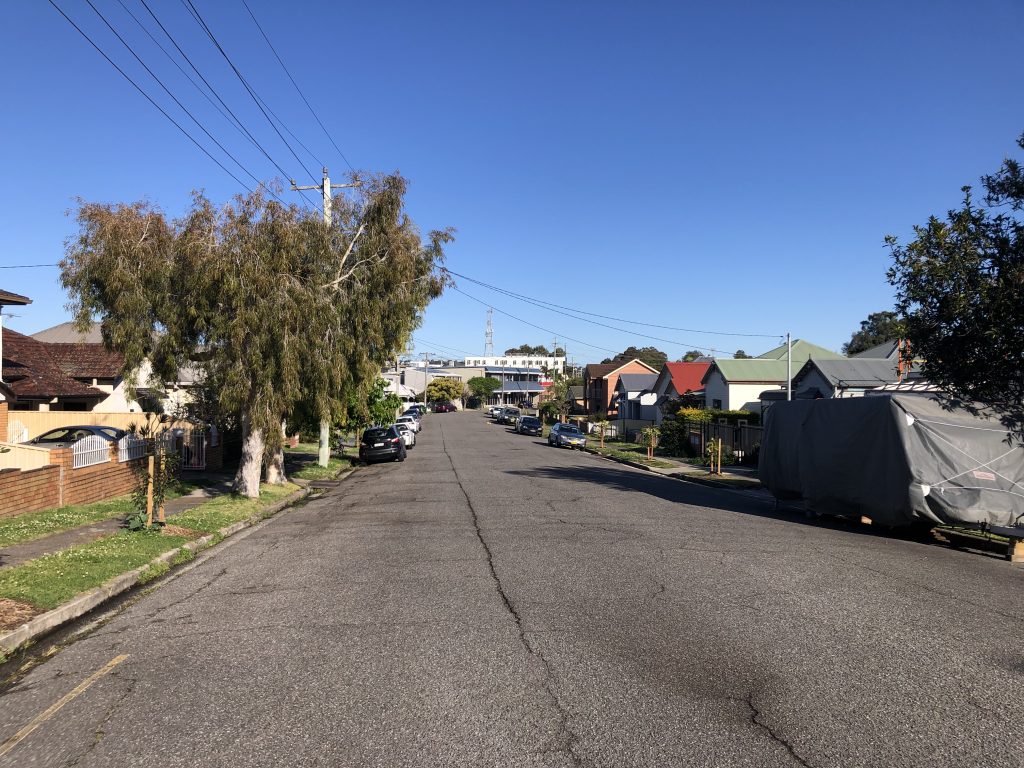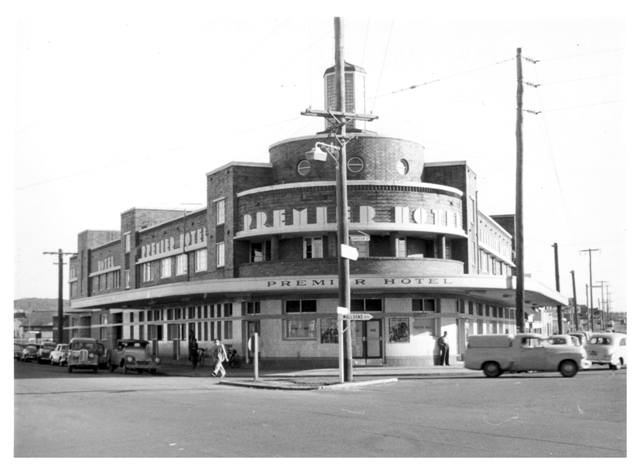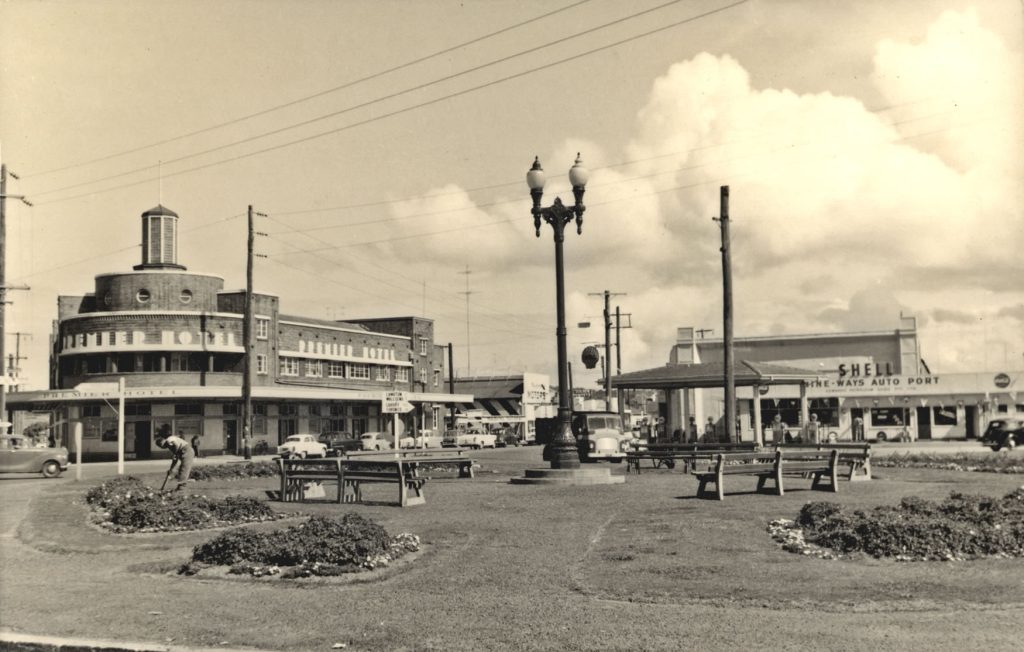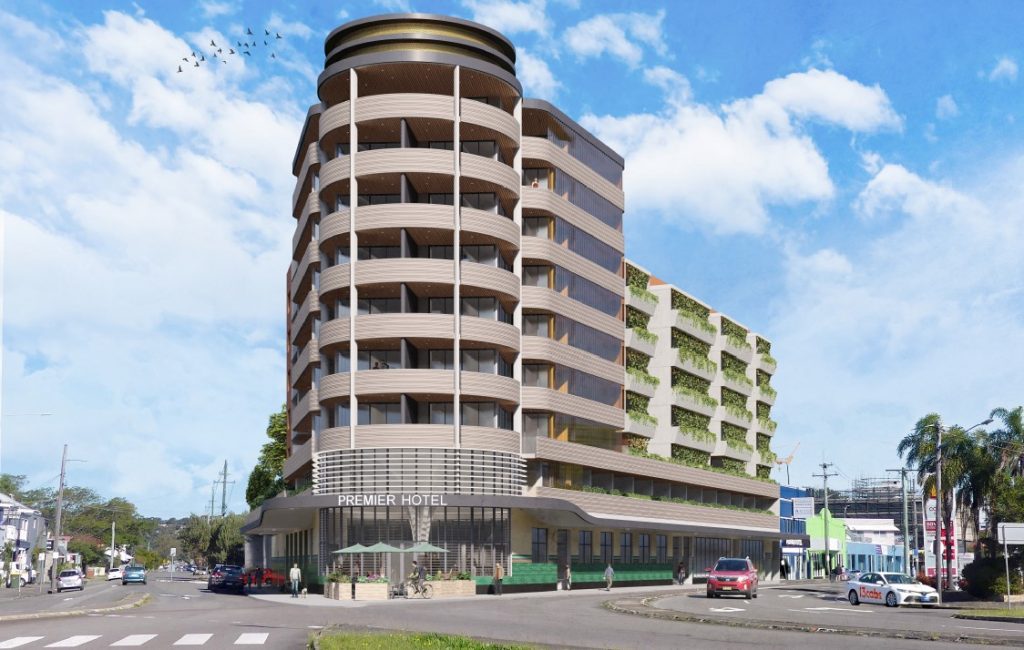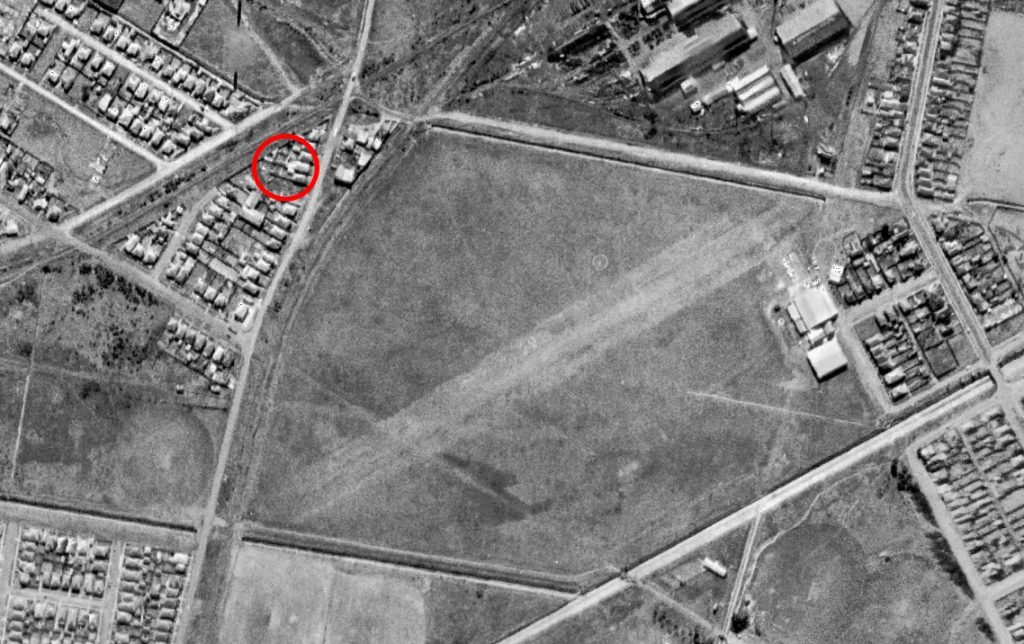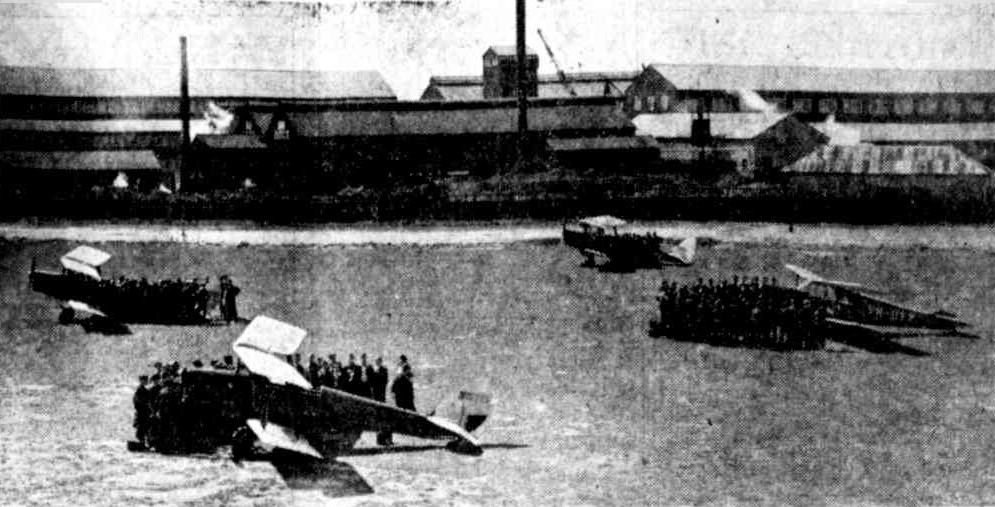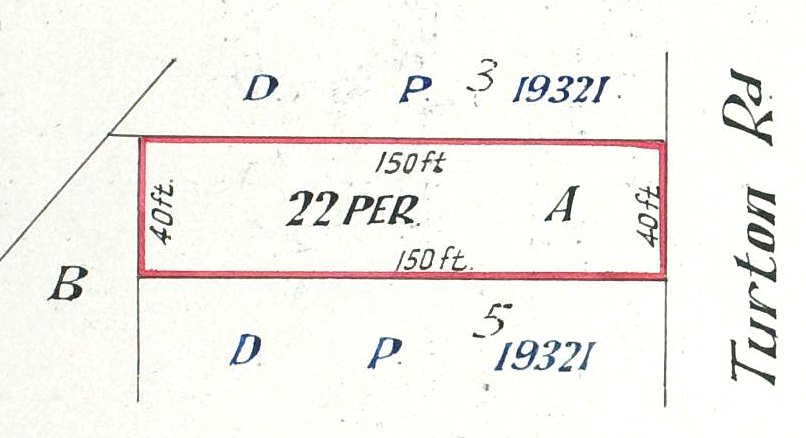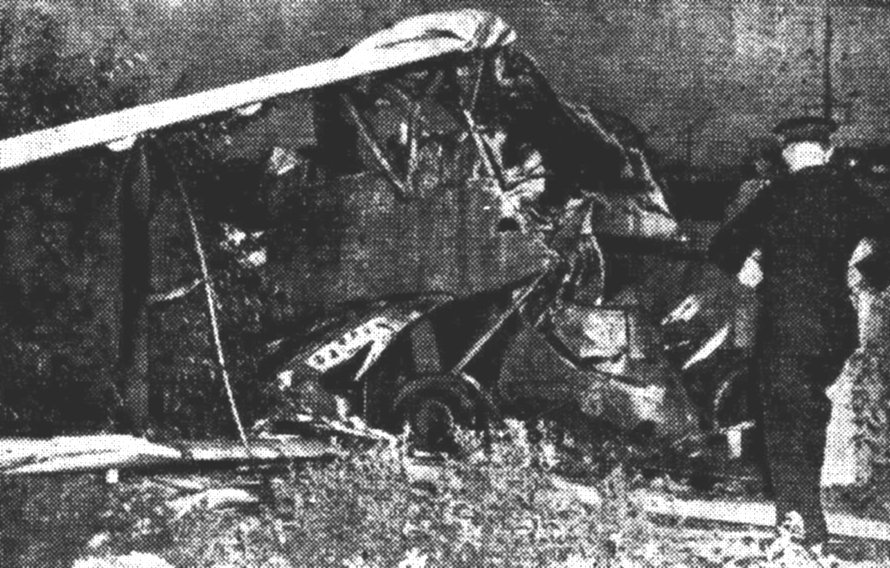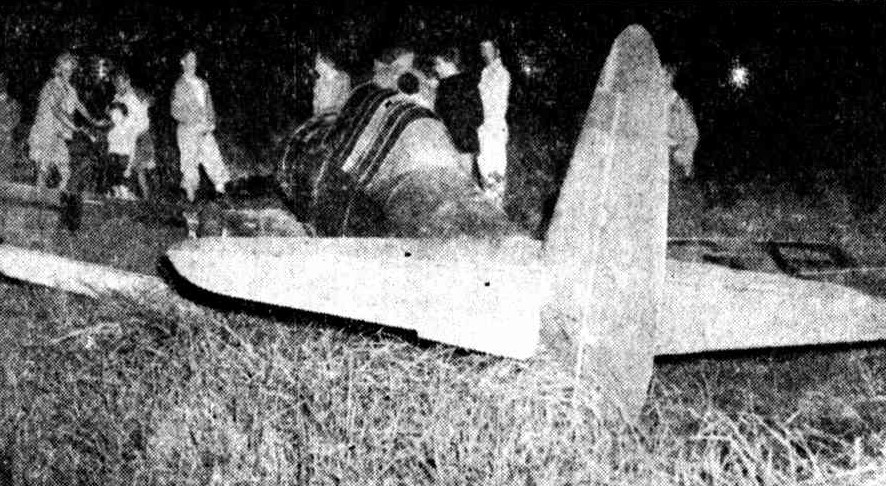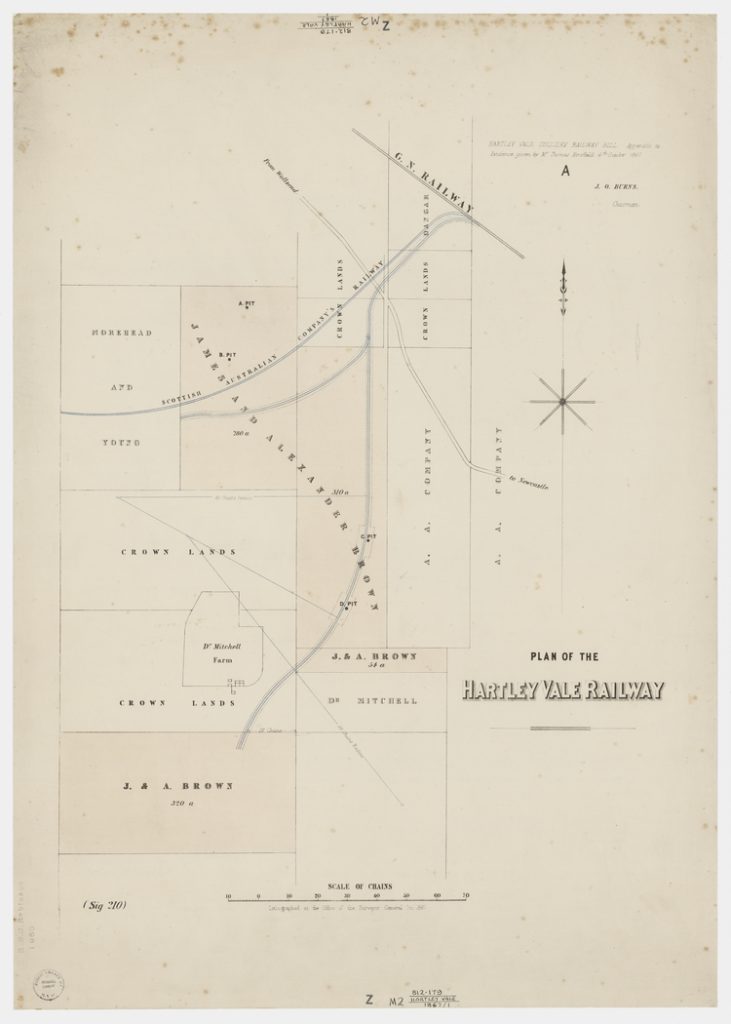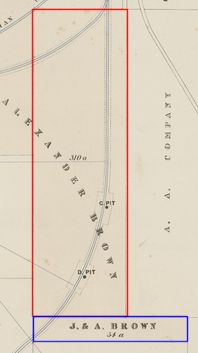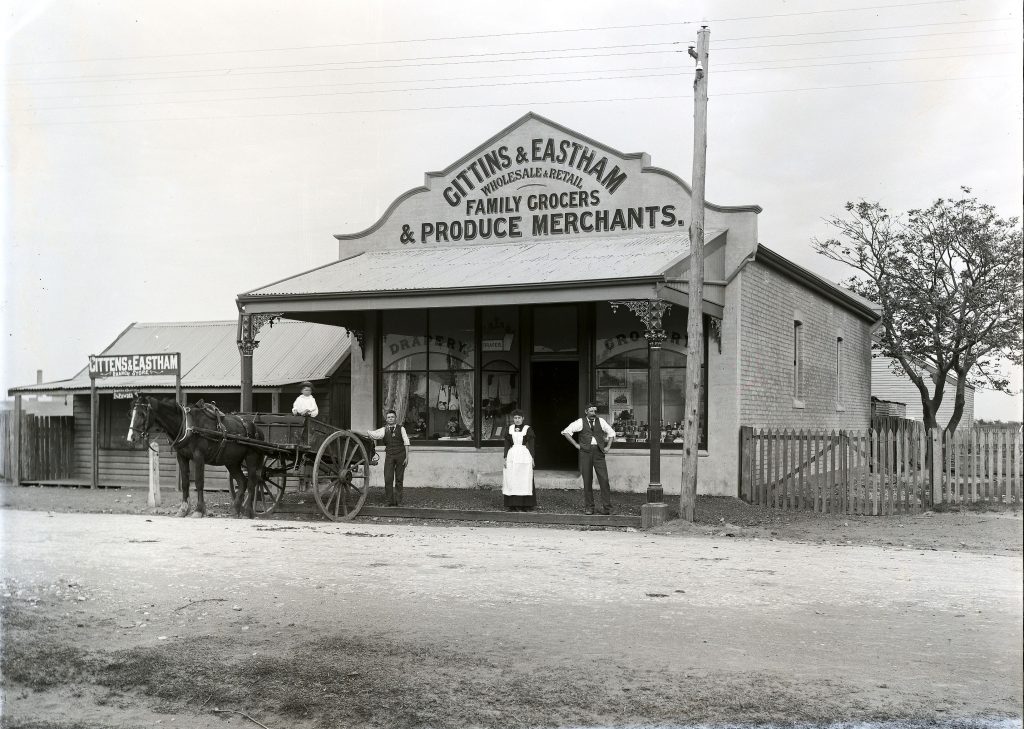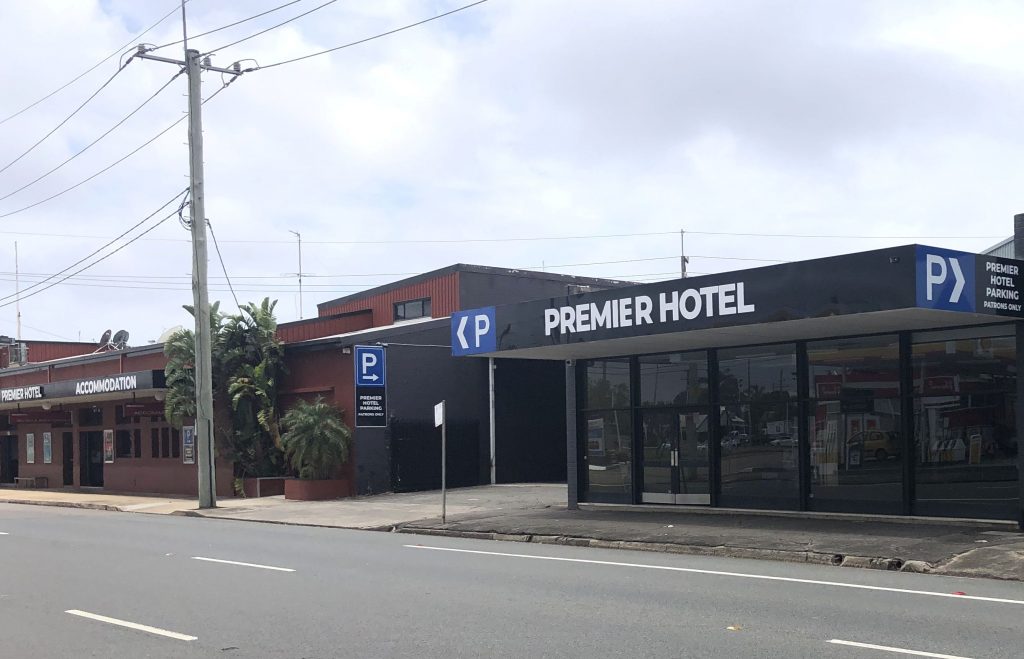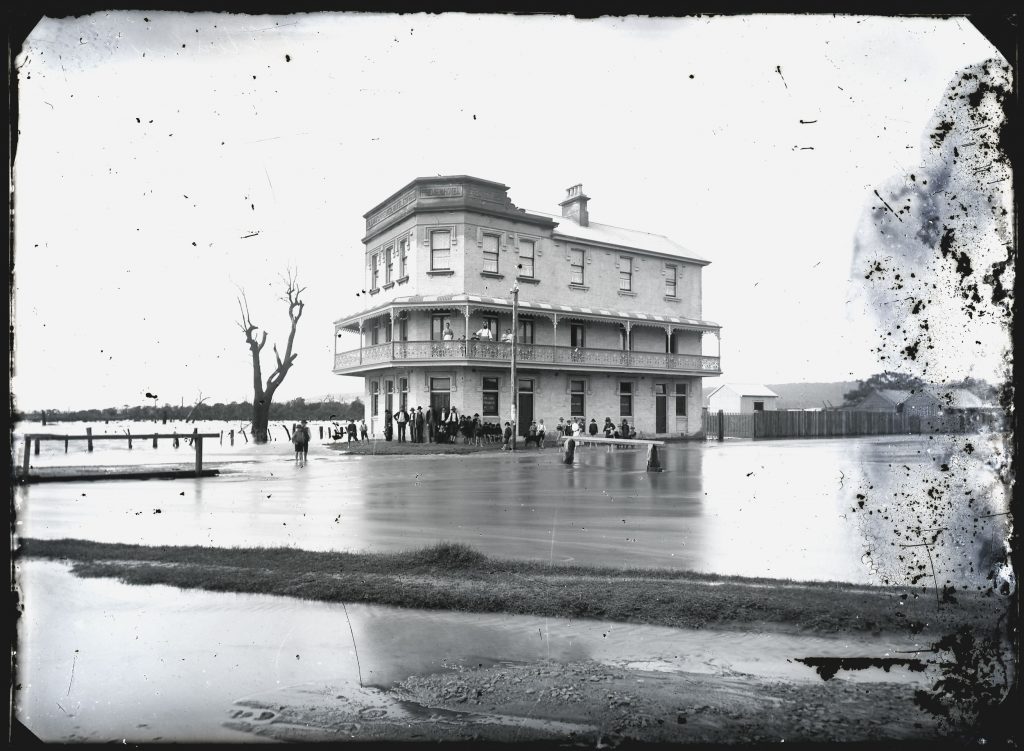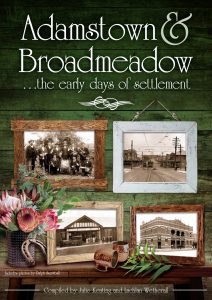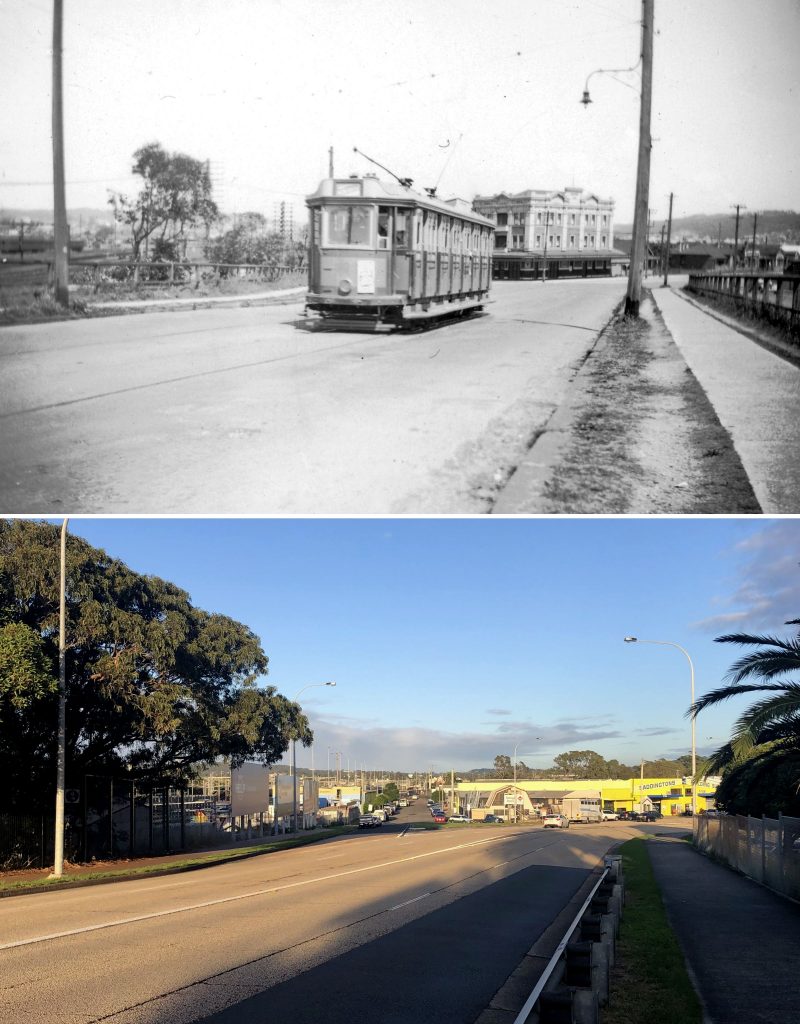This page aims to provide a comprehensive reference of hotels in New Lambton from 1869 to the present.
- New Lambton Hotel
- Hand of Friendship Hotel
- Sportsman’s Arms Hotel (1)
- Sportsman’s Arms Hotel (2)
- Nil Desperandum Hotel / Duckenfield Hotel
- Duke of Wellington Hotel
- Sunnyside Hotel
- General Roberts Hotel
- Blackbutt Hotel
This list covers hotels that were located in the area of New Lambton Municipal Council (1889-1938), shown by the white border in the image below. The current suburb of New Lambton is shaded in yellow. Note that the northernmost tip of the New Lambton municipality included a small part of present day Broadmeadow, which is why the Sunnyside Hotel is included in this page of New Lambton hotels.

The map below shows the location of Lambton Hotels. The four hotels that are still operating are shown in green, historical hotels are shown in red.
In documenting the history of hotels it is important to understand the roles of owners, lessees and licensees. The hotel owner is the person (or company) that owns the land and buildings upon the land. The owner may then lease the buildings to another person (or company) for the purpose of running a business such as a hotel. The hotel licensee is the person who is granted a liquor license by the government and is responsible for adhering to the liquor regulations. Sometimes the owner and licensee are the same person, but sometimes the owner, lessee and licensee are three different entities. For example, in 1878 for the New Lambton Hotel, the land was owned by the New Lambton Company, leased to Joseph Chinchen, and the hotel licensee was Enoch Davies.
The history of hotels can also be confusing in that the same hotel can have different names over time. For example, the Kotara Hotel was renamed to the Blackbutt Hotel in 1978. Sometimes a hotel name and license can be transferred to a different geographical location. For example, the Sportsman’s Arms Hotel first opened on Regent Street in 1870, but then moved to Hobart Road in 1903.
A further complication is the variant spellings of the licensee names. Where there are multiple spellings of a name and the correct spelling is uncertain, I have included variant spellings in square brackets. e.g. “Damerell [Damerill]”. Note that in the lists of licensees I have only included names up to about 1970, as online information about licensees after this date becomes sparse.
In the list below I have an entry for each hotel operating at a specific location. The hotels appear in order of the year they were first opened.
New Lambton Hotel (1869-1879)
The first hotel in New Lambton was the somewhat unimaginatively named “New Lambton Hotel”. It was erected on the south-west corner of Russell Rd and Regent St by Mr Hubbard of Hunter St Newcastle.
On our way home from the foot races, at Lambton, on Saturday last, we had an opportunity of paying a visit to the New Lambton Hotel, recently erected by Mr. Hubbard, of Hunter-Street. The building in question is certainly an excellent one, and, in every way, well adapted to the requirements of the place. The expeditious manner in which this hotel was put up is worthy, of notice. Less than four months ago, from the present time, the ground on which it stands was a wild, uncleared bush ; and the hotel has been open for nearly a month, so that, as a matter of fact, the hotel was only three months in course of erection. Of course this would be nothing out of the way if the site had been an accessible one — which it was not — the road to New Lambton being about as bad a one as there is in the whole district, and that is saying a good deal. The building is a two-story one, and appears to be well and faithfully built. It is nicely painted inside and out, and is really a very snug and comfortable place. The bar is commodious and airy, and in regard to attractiveness is not surpassed by any establishment in the city of Newcastle. On the upper floor of the hotel there is a large room, well adapted for public meetings and entertainments, and at the rear of the premises are stables to accommodate an almost unlimited number of horses. Altogether, the New Lambton Hotel is one of the very best hotels in any of the colliery townships.
The Newcastle Chronicle,17 August 1869.
Henry Lott, the first licensee of the hotel, was granted a publican’s licence in July 1869. His tenure at the hotel did not last long, only 9 months later in March 1870, the lessees (Hubbard and Chinchen) advertised for sale, the “license, stock, and furniture of the New Lambton Hotel.”
In May 1870 John Gordon announced in a large advertisement that he had taken on the New Lambton Hotel. His tenure was similarly short-lived and by March 1871 Hubbard and Chinchen were once again advertising the hotel for letting.
David Lewis was issued a publican’s licence commencing on 1 July 1871, followed by George Lowe who held the licence from 1 July 1874. In May 1875 George Lowe advertised “a sale by auction for household furniture and effects” at the New Lambton Hotel.
Thomas Hardy was issued the publican’s licence from 1 July 1875. In December 1876 the hotel had a narrow escape from being burned down, when a hanging kerosene lamp, without any apparent cause, suddenly exploded and splashed burning oil on the floor. Only the quick action of Thomas Hardy’s daughter in smothering the flames with a blanket prevented a serious conflagration.
In April 1877 the newspaper reported that the hotel was “about to change hands from Mr T Hardy to Mr Enoch Davies”. At a Police Court hearing in June 1880 “the license of the New Lambton Hotel, New Lambton, was cancelled, as the proprietor, Mr. Enoch Davis, was proved to have abandoned his licensed house.”
There is a final reference to the hotel on 15 October 1880, with an advertisement noting that “Mr T M Dalveen will address the electors … at the New Lambton Hotel”. As there is no evidence of any licensees after Enoch Davies cancellation, I can only assume that this is a reference to the hotel building, not the hotel as a licensed premises.
An article in September 1892 states that after the hotel was no longer licenced, the building was “used as a store and temperance hall.” Mentions of a Temperance Hall in New Lambton start appearing in Trove from September 1880, just a few months after the licence was removed.
In the period 1889 to 1892, the Lay Methodist Church of New Lambton met in the Temperance Hall before moving into their own church building in 1892.
There are no known photographs of the original hotel and Temperance Hall building, and the date of demolition is uncertain. The brick building that now occupies the site appears to be 1920s era.

Location
An 1877 map relating to the proposed site for New Lambton public school shows the New Lambton Hotel on the south-west corner of Russell Rd and Regent St.

The following information, also supports this location.
- 16 September 1869 article says it was “within a few yards” of Lunn’s Hand of Friendship Hotel south-east corner of Russell Rd and Regent St)
- 16 April 1878 advertisement for lease of New Lambton Hotel, applications to J Chinchen. An 1886 New Lambton Subdivision map shows that Lots 5 and 6 were leased to “Chinchin”, and Land Title Vol-Fol 1048-80 shows Lot 5 of Sec C passed into Ellen Chinchen’s ownership in 1892.
- 21 April 1951 article mentions “Lathlean’s Temperance Hall, a building on the corner of Russell and Regent Streets that had been a hotel.” Land Title record Vol-Fol 1048-80 shows Lot 5 of Sec C was owned by Richard Lathlean from 1892 to 1907.

Licensees
- Henry Lott (July 1869 to May 1870)
- John Gordon (May 1870 to June 1871)
- David Lewis (July 1871 to June 1874)
- George Lowe (July 1874 to June 1875)
- Thomas Hardy (July 1875 to April 1877)
- Enoch Davies [Davis] (April 1877 to June 1880)
Hand of Friendship Hotel (1869-1906)
See my February 2018 article for The Local on the Hand of Friendship Hotel.

Licensees
- Benjamin Lunn (15 September 1869 to November 1878)
- Jane Lunn (November 1878 to March 1884)
- James Lunn (May 1884 to 1886)
- John Williams (1887 to 1888)
- John (Jack) Hall (June 1888)
- Thomas (Tom) Durham (June 1888 to November 1889)
- John (Jack) Thomas (November 1889 to 1892)
- George Masters (1893 to 1895)
- Joseph (Joe) Garratt (1896 to 1899)
- Edmund (Ted) Butterworth (1900 to Feb 1903)
- Phillip James Byrne (Feb 1903 to 1904)
- John (Jack) Canning (1904 to October 1906)
- George Bertram Bowser (October 1906 to November 1906)
Sportsman’s Arms Hotel (1) (1870-1903)
In a 16 September1869 article on the rapid progress of New Lambton, the Newcastle Chronicle noted there were two hotels already and that “a third public-house is in course of erection, and the proprietor, Mr.Jones [sic], expects a license for it shortly after it is finished.” Just a few months later, on 22 January 1870, Nicholas Johns announced by way of advertisement the opening of the Sportsmans Arms hotel.

The hotel was located on the north-west corner of Regent St and Portland Pl.

In 1895, John Thomas purchased from the New Lambton Land and Coal Company, lots 6 and 7 of Section H, where the hotel building was located. Subsequently on 6 May 1899, Marshalls Paddington Brewery Limited purchased the hotel land and building.

Three years later in July 1902, Marshall’s Brewery commenced plans to construct a new hotel building in Hobart Rd, with the intention of transferring the license of the Sportsman’s Arms to the new premises and closing the original hotel in Regent St. The transfer of the licence to the new location occurred a year later in July 1903. William Thompson, the last licensee at the old location, continued on as licensee at the new premises.
The old Sportsman’s Arms Hotel in Regent-street, which is one of the oldest buildings in the municipality, and in the early days was considered to be among the best of its class, is now closed, the license having been transferred to the new building recently erected by the Marshall’s Brewery Company in Hobart-road.
Newcastle Morning Herald and Miners’ Advocate, 4 Jul 1903.
The old hotel building was occupied as a private dwelling for about two years, but after being vacant for several months a fire destroyed the building in June 1905. There are no known photographs of the original hotel building.
The land was then owned by a number of different people in the next 17 years, and then on 20 November 1922 the Methodist Church purchased the land to erect a church building

The New Lambton Uniting Church occupies the site today.

Licensees
- Nicholas Johns [Jones] (January 1870 to March 1871)
- Abraham Butterworth (March 1871 to June 1875)
- George Thomas (July 1875 to June 1879)
- Robert Morgan (June 1879 to February 1883)
- James Peattie (March 1883 to October 1883)
- James Williams (October 1883 to c. June 1884)
- Phillip J [G] Thorley (c. July 1884 to July 1884)
- Thomas Pringle (c. September 1884 to c. October 1887)
- Abraham Cowell (c. October 1887 to August 1893)
- John Thomas (August 1893 to c. March 1899)
- William Dorrity [Dorritty] (c. May 1899 to c. March 1902)
- William Thompson (c. July 1902 to June 1903 at Regent St, then continued as licensee at new premises in Hobart Rd)
Sportsman’s Arms Hotel (2) (1903-1987)



Licensees
Some details of licensees after 1919 are taken from the Sportsman’s Arms Hotel ‘yellow cards’ in the ANU Open Research Repository.
- William M. Bostock (July 1902 to June 1903, conditional licence while new hotel constructed)
- William Thompson (July 1903 to c. January 1905)
- James White (c. March 1905 to September 1905)
- Thomas McIntosh (November 1905 to October 1906)
- John Canning (October 1906 to 15 November 1907)
- David Russell (15 November 1907 to 26 November 1907)
- this is possibly erroneous, as only two weeks later another report states that the licence was transferred from John Canning to William Smith
- William Smith (26 November 1907 to death of Smith on 28 January 1908)
- Thomas Griffiths (January 1908 to March 1909)
- William Dent (April 1909 to April 1914)
- John Joseph Healey (May 1914 to January 1915)
- Richard Edward Goddard (February 1915 to March 1916)
- John Joseph Healey (April 1916 to August 1918)
- Joseph Patrick Walsh (August 1918 to c. November 1919)
- Edgar Condie [Condy] (c. November 1919 to July 1920)
- Arthur Haviland (July 1920 to July 1920)
- Thomas Wallington (August 1920 to October 1921)
- Garfield Theodore Du Rieu (October 1921 to February 1922)
- Robert Meek Hopes (March 1922 to October 1923)
- Mrs Ellen Chappell (October 1923 to April 1935)
- William Dominic Ruggeri (April 1935 to death of Ruggeri on 18 February 1950)
- Mrs Catherine Anne Ruggeri (April 1950 to November 1957)
- William Henry Murphy (November 1957 to July 1959)
- William Smoker Boyling (July 1959 to April 1963)
- Horace William Box (April 1963 to March 1965)
- William Edward Compton (March 1965 to December 1978)
- Roy Raymond Beverly (December 1978 to ????)
Nil Desperandum Hotel / Duckenfield Hotel (1876-1880)
The Nil Desperandum was New Lambton’s shortest-lived hotel, operating for just four years from July 1876 to June 1880. There are no known photographs of the hotel.

Licensees
- Edgar William Ashby (July 1876 to August 1879)
- Henry Doherty (August 1879 to June 1880)
Duke of Wellington Hotel (1876-present)








Licensees
Some details of licensees after 1919 are taken from the Duke of Wellington Hotel ‘yellow cards’ in the ANU Open Research Repository.
- David Jones (1876)
- Abraham Butterworth (1878)
- Thomas Pringle (1879)
- John Kelly (1884)
- George Thomas (1885)
- Thomas Durham(1888)
- Joseph Garratt (1887)
- George Burt (1895)
- Edmund Butterworth (1899)
- John Atkinson (1900)
- Thomas Thompson (1902)
- Edward Cambourn (February 1903 to c. Dec 1907)
- Hugh Buchanan (c. May 1908)
- Patrick Slavin (1909)
- Robert Frew (1914)
- Paul Turnbull (1916)
- Keely S. P. (1 February 1925 to 18 January 1926)
- Alex Campbell Smith (19 January 1926 to 17 May 1926)
- A. P. Hillier (18 May 1926 to 28 March 1927)
- J. Richard Dixon (29 March 1927 to 26 March 1928)
- Horace Dee Magner (27 March 1928 to 27 August 1928)
- George E. Duckworth (28 August 1928 to 22 December 1932)
- J. D. Evans (23 December 1932 to 8 October 1945)
- Thomas Rawle (9 October 1945 to 27 October 1947)
- Beatrice Millie Groves (28 October 1947 to 27 November 1947)
- Frederick Hector (28 November 1947 to 21 November 1960)
- Kevin Ray Matthews (22 November 1960 to 25 May 1964)
- Joan Audrey Muriel Smith (26 May 1964 to 13 December 1967)
- William George Morgan (14 December 1967 to 19 April 1972)
- Robert Arthur Monnox (20 April 1972 to 28 April 1976)
- Edward Joseph Chapman (29 April 1976 to 15 June 1977)
- Charles Alexander Robertshaw (16 June 1977 to 3 May 1978)
- Wayne Maxwell Balcomb (4 May 1978 to 17 October 1979)
- Noel Samuel Smith (18 October 1979 to ????)
Misnomers
For a couple of years, in 1897 and in 1898, the Government Gazette for publican licensees lists the hotel as the “Duke of Edinborough”. This is almost certainly an error due to a confusion between the two dukes – a confusion that often recurred. For example in March 1928 when referring to the transfer of licence from Richard Dixon to Horace Dee Magner, the Newcastle Morning Herald correctly reported the name as “Duke of Wellington” while the Newcastle Sun reported the name “Duke of Edinburgh”.
Sunnyside Hotel (1884-present)





Licensees
Some details of licensees after 1919 are taken from the Sunnyside Hotel ‘yellow cards’ in the ANU Open Research Repository.
- Michael Fenwick (1884)
- Harriet Fenwick (1896)
- William Henry Allen (1900)
- Andrew Kirkaldy (1901)
- Bridget Lee (????)
- Joseph Heslop (May 1903 to August 1911)
- Randolph Baldwin (August 1911)
- Robert Forbes (1916)
- James Frazer (1918)
- Percy G. Phillips (1919)
- W. W. Lake (19 July 1923)
- J. H. Sampson (8 August 1923)
- P. Quinn (28 April 1925)
- T. Shipley (11 October 1932)
- Henry G. Dunne (16 April 1934 to death of Dunne on 6 December 1963)
- Walter George Farnham Dunne (27 June 1962 as agent for estate, 26 May 1963 in own right)
- Daphne Joyce Ada Dunne (21 January 1964 as agent, 2 March 1965 in own right, to ????)
- Name change by marriage, to Mrs D. J. A. Ling, on 15 August 1969
General Roberts Hotel (1903-present)
See my April 2023 article for The Local on the General Roberts Hotel.
Licensees
Some details of licensees are taken from the General Roberts Hotel ‘yellow cards’ in the ANU Open Research Repository.
- Frederick George Roberts (April 1903 to April 1904)
- Phillip James Byrne (April 1904 to June 1905)
- John Keim [Kiem, Kilm, Kien, Kiern, Kierns] (June 1905 to April 1913)
- Edward Butterworth (April 1913 to April 1916)
- John Drummond (April 1916 to May 1919)
- Oliver O Woods (May 1919 to September 1919)
- Frank Burden (September 1919 to July 1927)
- George James Embleton (July 1927 to April 1928)
- Leonard P Damerell [Damerill] (April 1928 to January 1929)
- Joseph Patrick Quinn (January 1929 to November 1945)
- William Thomas Garaty (November 1945 to June 1957)
- James Robert Rose & Mary Rose (June 1957 to January 1961)
- Albert Frederick Seales (January 1961 to April 1966)
- David Alfred James Blanch & Ann Blanch (April 1966 to March 1968)
- Joseph Moody & Ellen McReadie (March 1968 to ????)
Blackbutt Hotel (1956 to present)
TO DO


Licensees
Details of licensees are taken from the Blackbutt Hotel ‘yellow cards’ in the ANU Open Research Repository.
- Christina Margaret Bolger (21 December 1956)
- Joseph William Donnelly (24 December 1956)
- John George Baddely (18 January 1957)
- Patrick Robert Buckley (16 June 1959)
- Cyril George Schneider (21 April 1959)
- Roy Bede Mahony (15 May 1975)
- Bernard S. Proudlock (20 March 1980 to ????)


